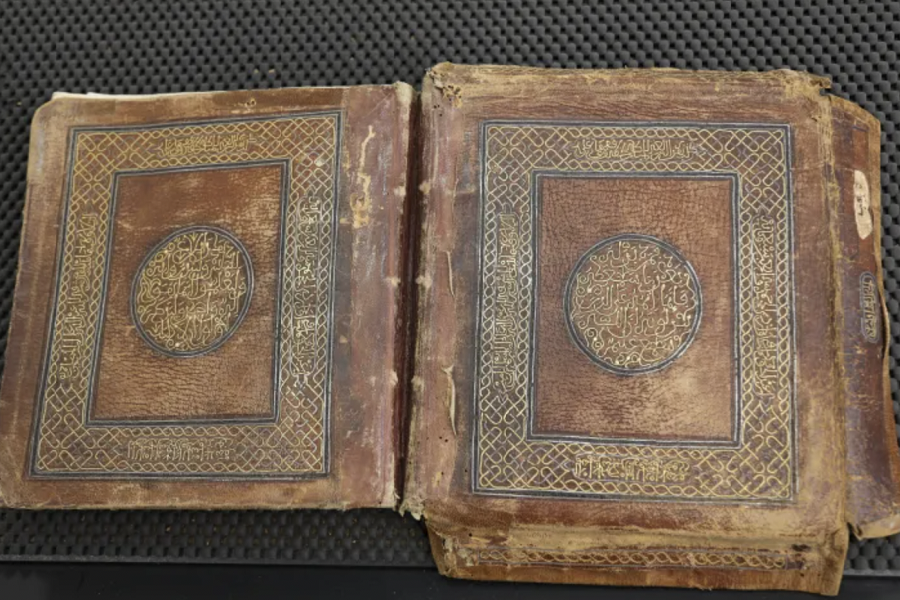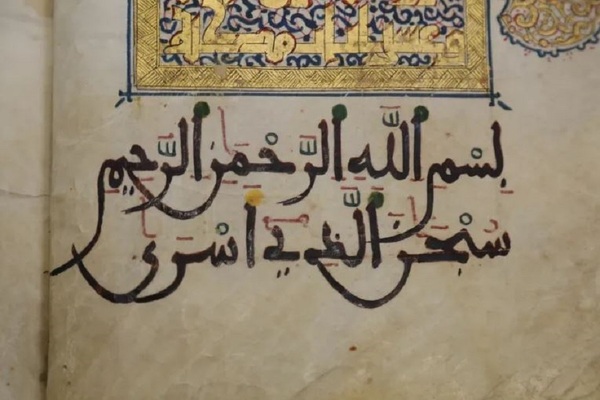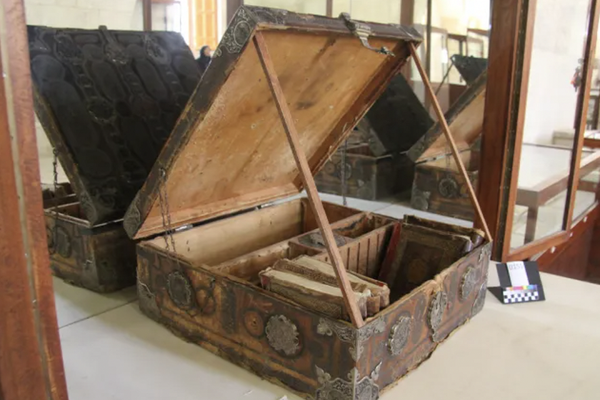Historic Moroccan Quran Manuscript at Al-Aqsa Preserves Centuries of Art, Devotion

In 1344, Sultan Abu Al-Hasan Ali bin Othman of the Marinid dynasty gifted a handwritten Quran manuscript to Al-Aqsa Mosque in al-Quds.
Known as the Moroccan Raba’a, it was one of five complete Qur’ans the sultan dedicated to major Islamic holy sites, Yabiladi reported on Tuesday.
Historical accounts state that the first copy was sent to the city of Chellah, while the second and third were donated to the Prophet’s Mosque in Medina and the Grand Mosque in Mecca, respectively. The Al-Aqsa copy was the fourth. The fifth manuscript, intended for the Ibrahimi Mosque in al-Khalil, is believed to have been partially completed by the sultan’s sons after his death.
Today, the Moroccan Raba’a at Al-Aqsa is the only known surviving example of the original five. It is housed in the Islamic Museum within the Al-Aqsa compound, kept in a wooden case and registered as manuscript number 0152.
Read More:
Originally composed of 30 volumes, only 24 remain intact. Five volumes were lost around 200 years ago and were later replaced with handwritten copies in 1806 by Haj Mubarak bin Abdul Rahman Al-Mashwanshi Al-Maliki.
His contributions are marked in endowment notes at the foot of each replaced page. Volume 30, which contained shorter Quranic chapters, was reportedly stolen between 1931 and 1932.
The manuscript was designated as a waqf, or religious endowment, for Al-Aqsa. An official deed confirming this status is still held in the archives of the Sharia court in al-Quds.
Each volume ends with a gold-framed inscription in Kufic script, outlining the terms of the endowment.
Read More:
This document states that fifteen Moroccan scholars, all following the Maliki school of thought and memorisers of the Quran, were appointed to recite from the manuscript each morning in the Dome of the Rock. At the end of each session, they would pray for the sultan, his descendants, and the broader Muslim community.
In addition to its religious significance, the Moroccan Raba’a is recognized for its artistic value. The manuscript was written in the Maghrebi script known as Al-Qayrawani, which evolved from early Kufic styles. Each verse was inscribed with ink made from natural materials such as saffron, musk, and carbon.
Each volume begins with a Sir Lawha, a decorative frontispiece measuring approximately 11.5 by 11.5 centimeters. Scholars have identified four unique geometric styles among these frontispieces, all based on the square shape.
Experts say this recurring motif has symbolic meaning. The square reflects the design of major Islamic structures, such as the Kaaba and the Dome of the Rock, underscoring the connection between sacred architecture and spiritual symbolism.
Source: Agencies





